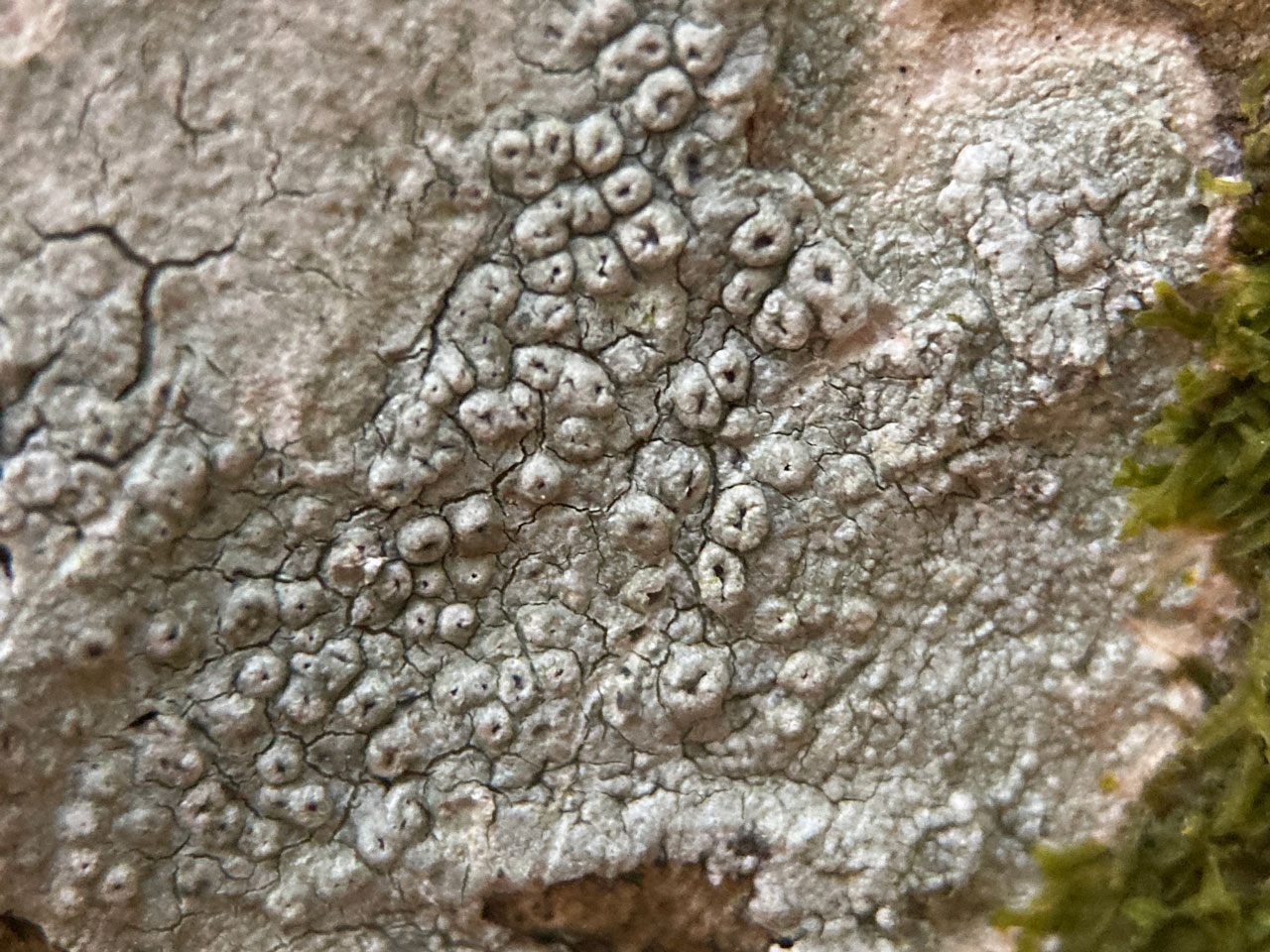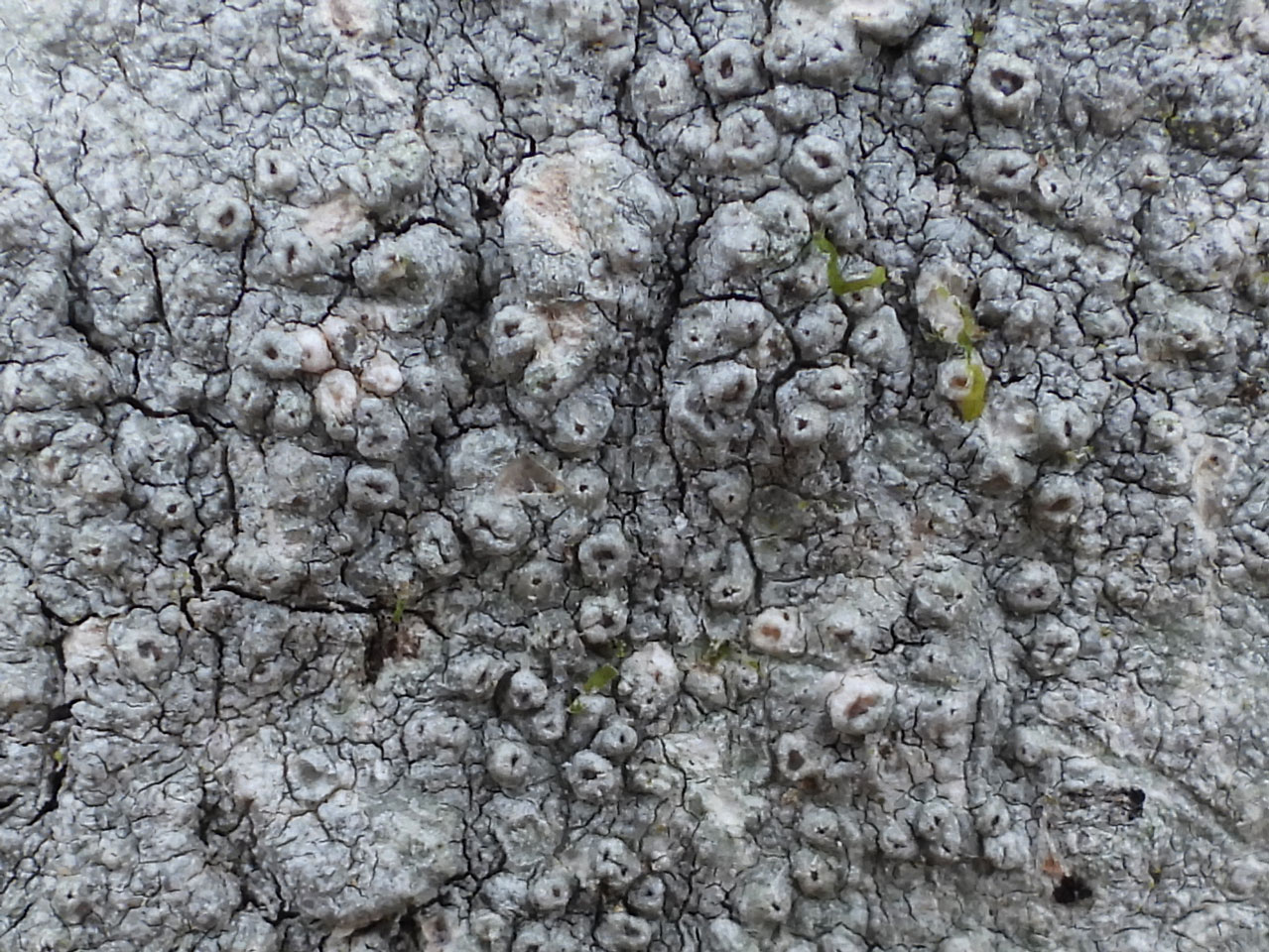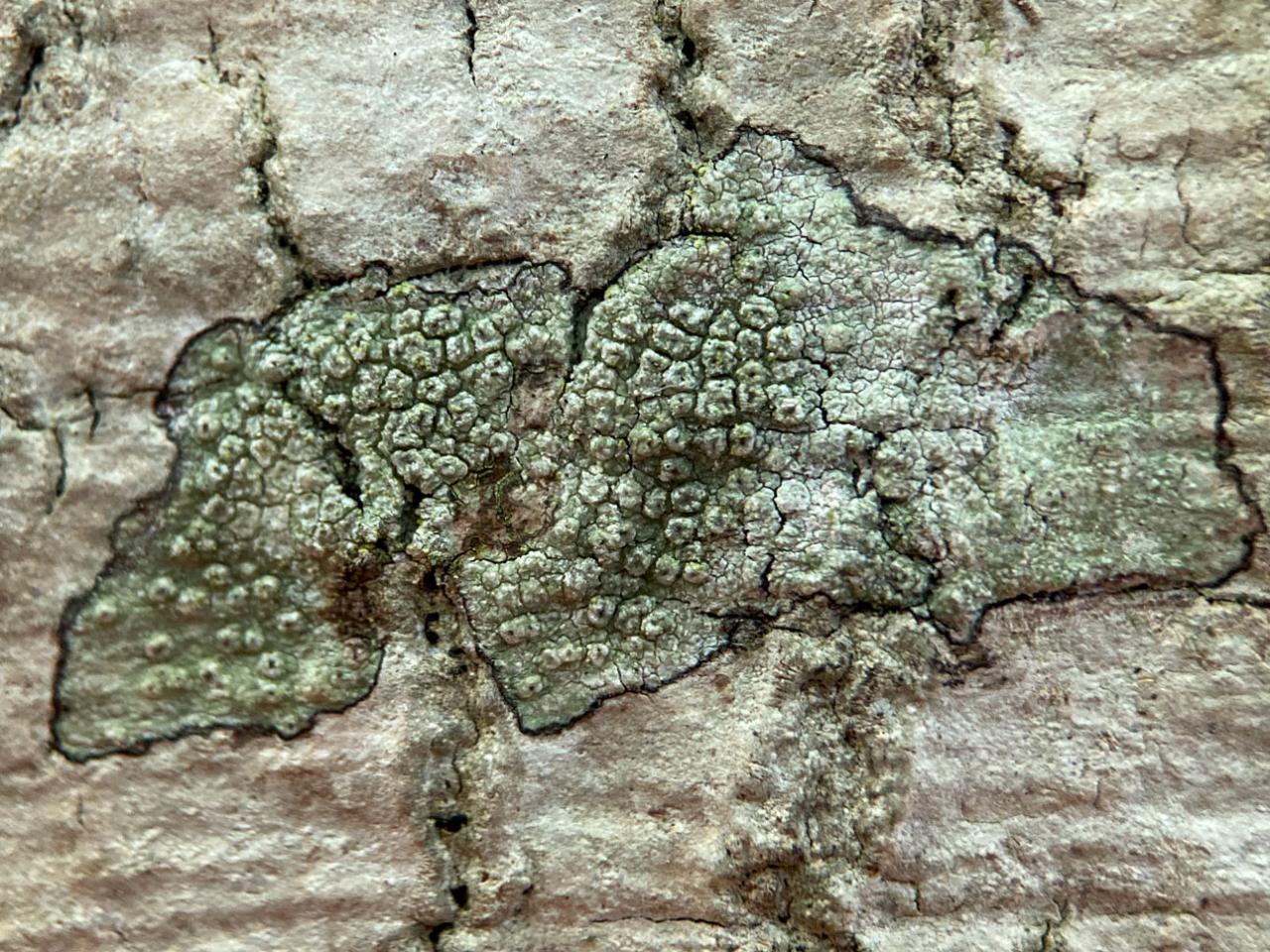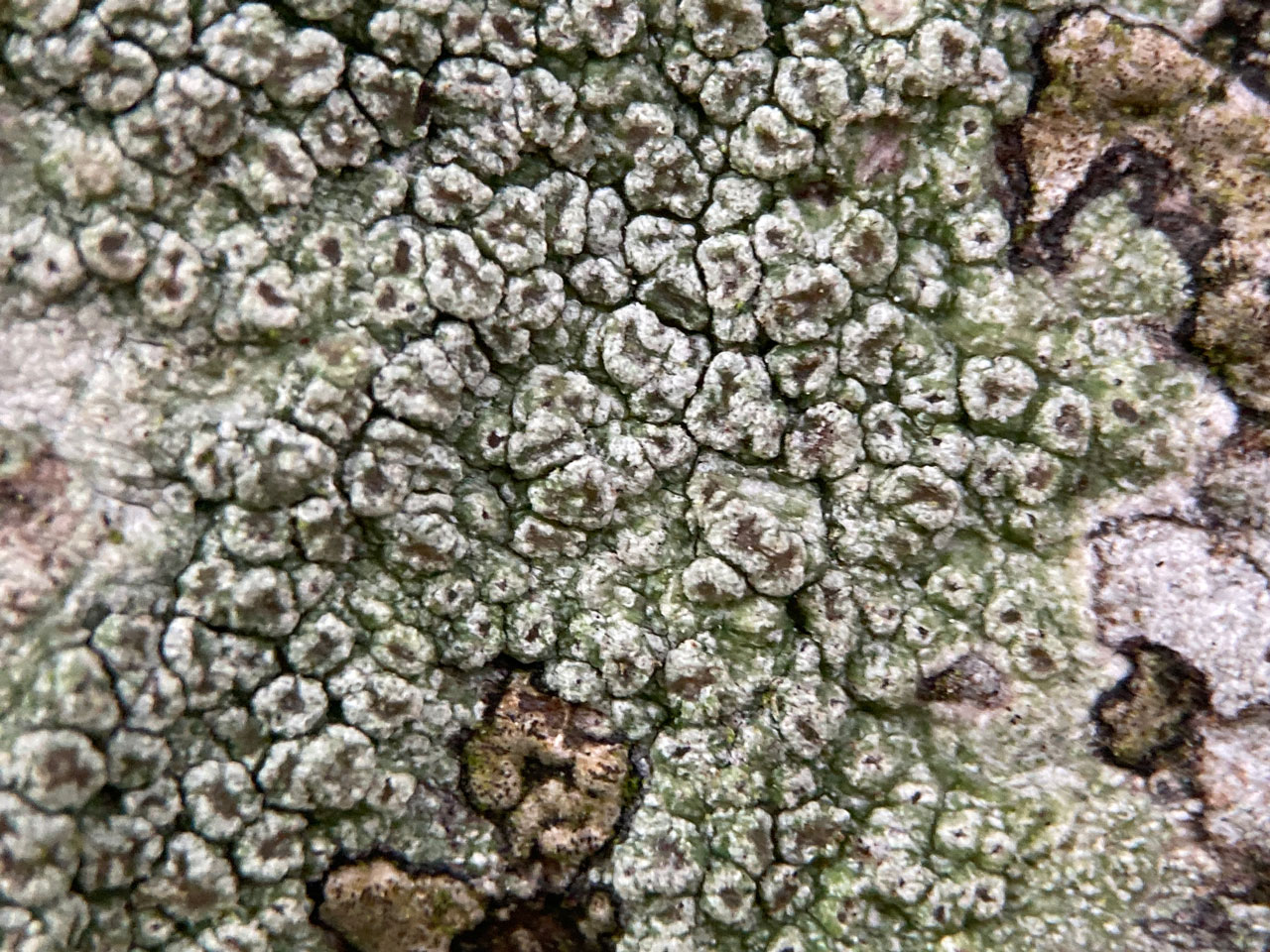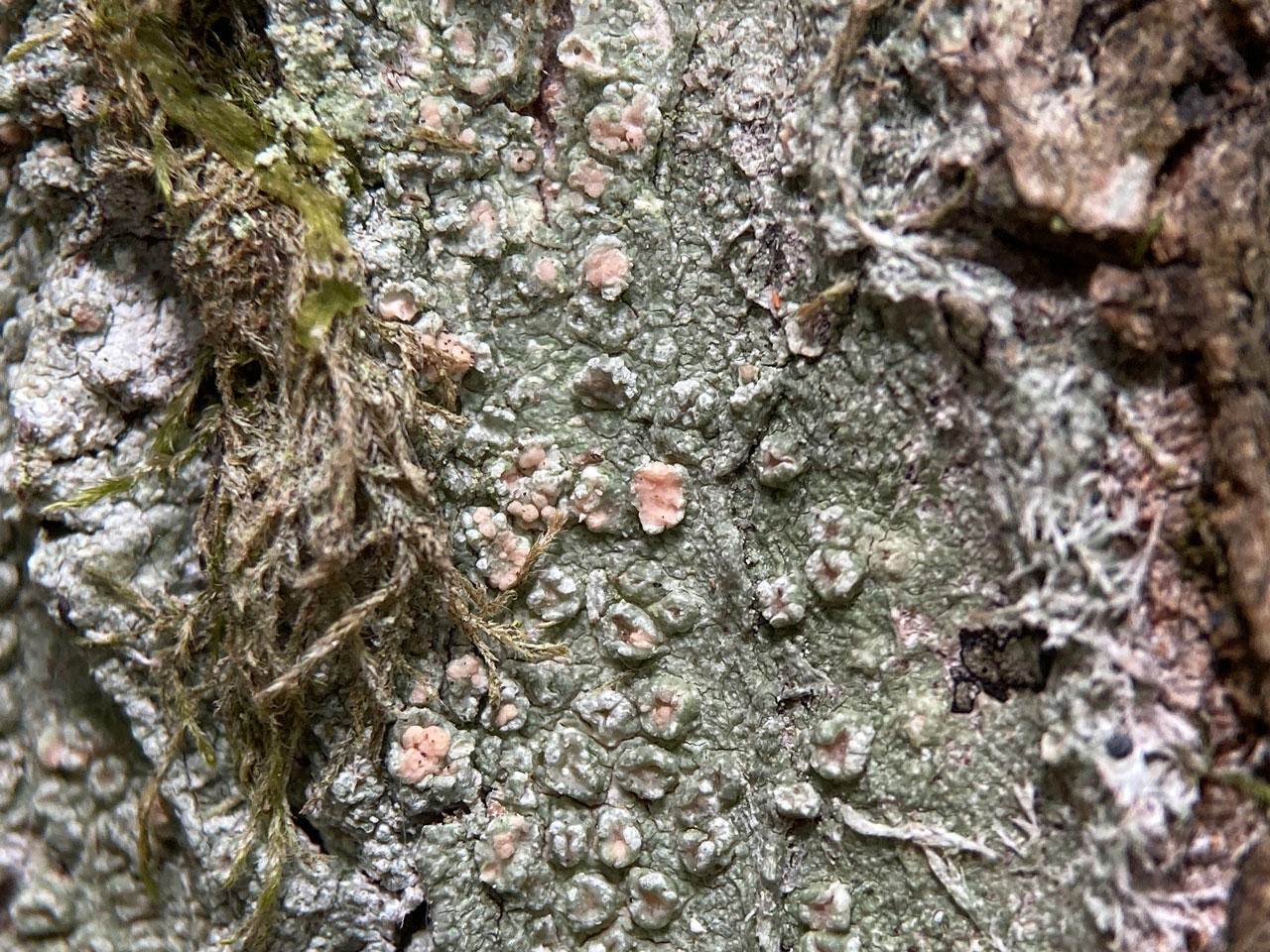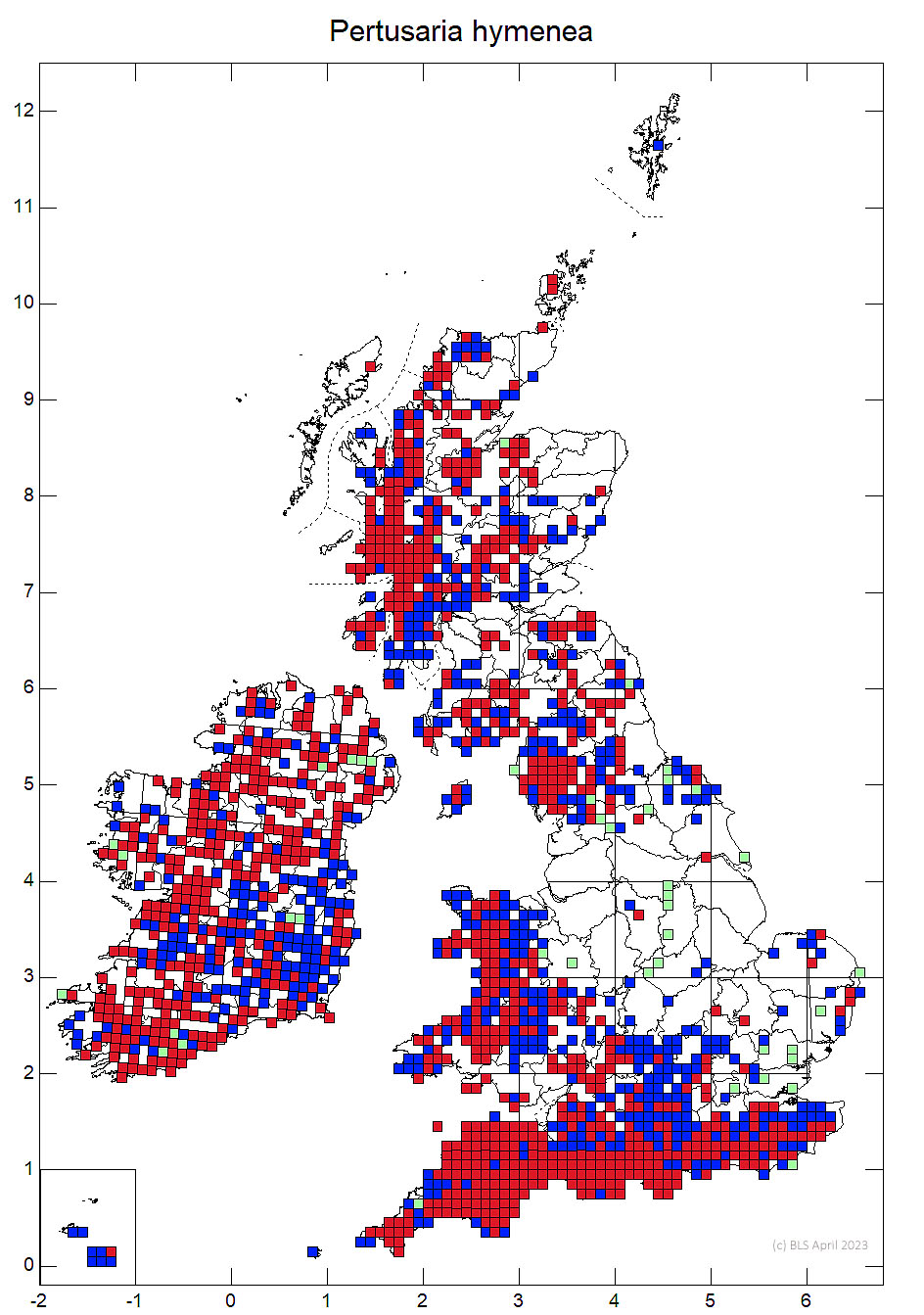Pertusaria hymenea
Pertusaria wulfenii
A widespread and frequent epiphytic Pertusaria, with a rather dark grey with fertile warts that have a single irregular opening. Often associated with Pertusaria pertusa, which has a paler thallus with more rounded, smooth warts, each with several dark punctiform discs, resembling a pepper shaker.
Thallus superficial, in small patches or widely spreading, thin to moderately thick, continuous, somewhat waxy, margin ± entire, rarely zoned; upper surface grey to yellow-green-grey or dark grey, smooth in young thalli, becoming roughened and ± tuberculate, often with deep rimose cracks. Fertile warts to 2 mm diam., often numerous and crowded, obscuring the thallus, semi-globose, often distorted (plicate-deformed), ± constricted at the base, containing 1 (-4) apothecia; discs (0.3–) 0.6 (–1.8) mm diam., rounded or rather irregular, often widening, the surface brown- or grey-black, often ± grey- white pruinose, surrounded by an uneven, often somewhat elevated thalline margin; epithecium K+ violet. Asci 8-spored. Ascospores 60–110 (–120) × (20–) 30–50 μm, wall 6–9 (–29) μm thick, zoned, not striate. Pycnidia immersed, ostiole pale; conidia 13–25 × ca 0.5 μm, straight or somewhat curved. Thallus C+ yellow, K–, KC+ orange, Pd–, UV± pale orange, K/UV (wet)+ bright yellow-green (thiophaninic acid, ± O-methylmonochlornorlichexanthone and ± gyrophoric acid).
In shaded sites the apothecia of this rather variable species can develop widely exposed, pale discs which are Lecanora-like; in more exposed sites the disc is darker, less exposed and more punctiform. The thallus varies from yellow in warm, sheltered but sunny sites, to greenish grey in shaded ones. Pertusaria pertusa has more rounded, smooth warts, each with several dark punctiform discs, a consistently lighter and greyer thallus and prefers better lit situations.
The type host for Sphaeropezia pertusariae (Etayo et al.) Baloch & Wedin (2013) and Tremella pertusariae Diederich (1996). The most common lichenicolous fungus on this host is Sclerococcum parasiticum (Dactylospora parasiticum), and others recorded are Acolium sessile, Marchandiomyces corallinus, Sphinctrina turbinata, Tremella pertusariae and an unidentified Lichenochora with 3-septate ascospores ca 20 × 6.5 μm in size.
On bark of woodland, wayside and parkland broad-leaved trees, often in rather shaded sites, rarely on sheltered rocks in woodland. A characteristic species of the Mature Mesic Bark Community (Pertusarietum amarae).

Frequent, throughout Britain & Ireland, except where heavily polluted in the past.
Cannon, P., Chambers, S., Coppins, B., Sanderson, N. & Simkin, J. (2021). Pertusariales: Pertusariaceae, including the genus Pertusaria. Revisions of British and Irish Lichens 6: 1-12.
Text by Neil A Sanderson based on Cannon et al (2021)
